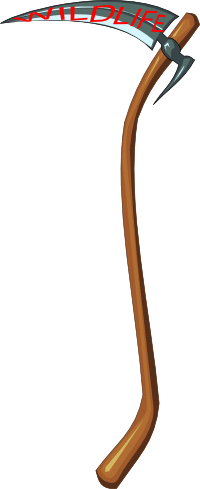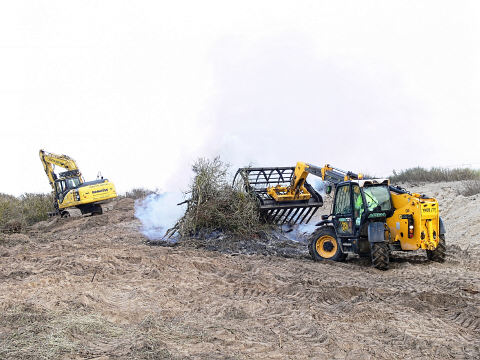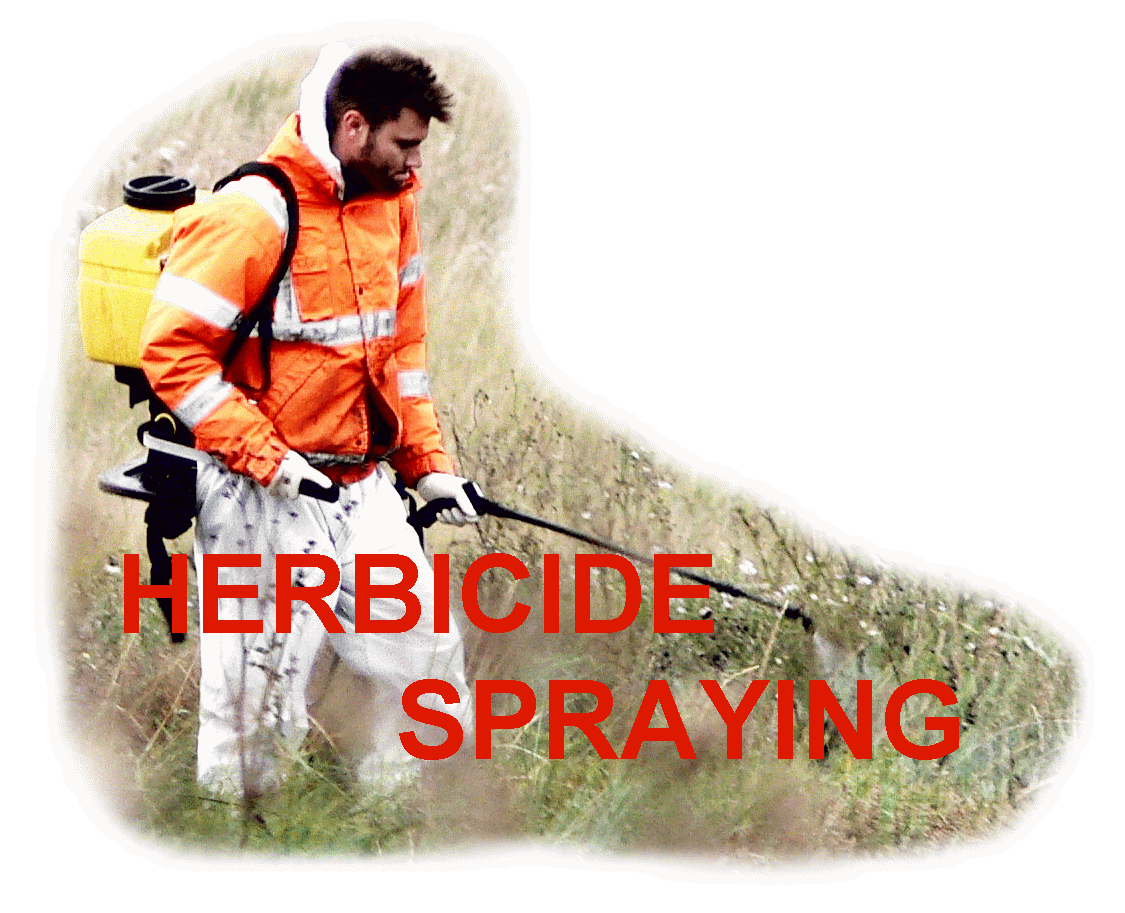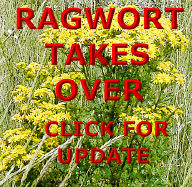From: Davy, Stuart
Date: 08/01/2015 12:22:51
Subject: Seacroft SSSI - Buckthorn removal & toxic chemicals
Dear Mr Savage,
I understand you have not discussed the concerns that you raise in
your e-mail with Mr Pocklington, who you know is leading on this
project and is able to inform you concerning some of the issues
you raise.
Try for yourself, I got nowhere.
David.Pocklington@e-lindsey.gov.uk
Regarding the reasons for management - you still do not say if you have contacted Natural England on this matter and what their response is. I believe the term ‘management’ is correct in this context where the aim is to gain a better balance between habitats and in this case it is to increase yellow dune habitat rather than grey dune with its scrub. Also I would point out that conserve does not mean the same thing as preserve. The consensus is that for many years the amount of scrub on the dunes has greatly increased and dominated. In the document you refer to, the balance was to aim for 30% scrub cover on the dunes, which is what we aim to achieve. Where the buckthorn is in isolated areas as on the outer dunes re-colonisation by suckering is avoided and seedlings can be removed by hand.
I would strongly refute your statement 'Council plans put the health of the public and their pets at risk from the long term use of toxic chemicals'. The Council has no intention of putting the public and their pets at any increased risk and will do what is necessary to reduce risk as far as practicable. I do not believe the Council has even mentioned a '10 year spraying programme'.
The Draft management plan, only mentions follow on spraying for 3 years and that will be reviewed at least annually. The amount of spraying needed is highly dependant on the resulting buckthorn re-growth. That is why we chose to remove as much of the root mass as possible by mechanical means - to reduce the later need for spraying chemicals to control re-growth. We have an agreed 10 year management plan that does mention further spraying to eradicate sea buckthorn from these areas but if needed, this is likely to be only spot spraying of plants in the later years.
Using spray or ‘weed wiping’ equipment is considered at present to be the most effective and least costly way of controlling the scrub as evidenced at Saltfleetby/Theddlethorpe and Gibraltar Point reserves. We will continue to review all options but it seems unlikely that the hand-working you mention would be at all successful.
I am sorry for not replying to your point about chemical spraying but you did not ask for our justification for this. Also at present, no decision has been made on the type of chemical (herbicide) that can be used or how it will be applied. We will be guided on this by Natural England and other professionals. It is possible we may use some formulation of Glyphosate which is considered safe at present and is very widely available from shops and stores for the public to use in their own gardens.
We will follow best practice: the advice (for Glyphosate) at present is to keep pets away from sprayed areas until it has dried. This product is inert in the soil and rapidly breaks down. We act responsibly and have trained operatives who are aware of the regulations. Regarding the area nearest the properties, on the map you saw - no decision has been made yet to rake this out. It may be cut by hand or machine and the stumps treated individually.
Overall, we will try to limit the amount of herbicide used in order to protect the environment – this is also required by regulations.
I trust the above response may allay some of your concerns, but please speak to David Pocklington if you would like more information. We would like you to be kept well informed and hopefully support our aims as part of managing the wider Gibraltar Point nature reserve area and SSSI that I know you support.
Yours Sincerely
Stuart Davy - Chief Executive
~~~~~~~~~~~~~~~~~~~~~~~~~~~~~~~~~~~
My further response to Mr Davey
From: Tom Savage
Date: 01/13/15 08:54:34
To: Stuart Davy - Chief Executive ELDC
Cc: Mark Simmonds MP; Cllr. Doreen Stephenson - Leader of ELDC; David Pocklington; Cllr. Steve O'Dare - ELDC Environmental Portfolio Holder; Cllr. Dick Edginton; Cllr. Neil Cooper; Cllr. John Byford; Cllr. Mark Smith; Cllr. Steve Kirk; Cllr. Sue Binch
Subject: Re Seacroft SSSI - Buckthorn removal & toxic chemicals
Dear Mr Davy
I had hoped that it would not be necessary to come back to you again but if you are to proceed you must at the very least understand why there is public concern. I find it very sad but hardly surprising that you have actually convinced yourself that the District Council will be taking the right action and nothing could be further from the truth.
I have already spent over an hour talking to David Pocklington about your plan and although helpful, he is only able to reiterate the detail to which he has unfortunately committed the Council. If this matter is to be scrutinised by my member of parliament he would expect the Chief Executive of the Council who carries ultimate responsibility to express his opinion, not a more junior officer.
I note that you acknowledge the need for Buckthorn cover and that you quote from the Buckthorn report that “the balance was to aim for 30% scrub cover on the dunes” confirming the Council’s intention, “which is what we aim to achieve”. Just for reference I have attached a copy of your site plans A & B on which are ringed the areas of dune from which Buckthorn is to be removed and it is these dunes which fall into the category which international scientific opinion recommends 30% cover be retained. Your plan clearly states that ALL Buckthorn on the outer dunes (which from the attached plan also includes the central dunes) is to be removed by mechanical means, there simply is no intention to achieve 30% in these vital habitat areas.
I am interested in your comments concerning risk to the public and their pets and that you will be doing “what is necessary to reduce risk as far as practicable”. Natural England consider the elimination of Buckthorn on the site to be desirable, meeting self imposed targets but I am sure that most right minded people and their lawyers would still consider it far from an absolute necessity in the UK’s foremost area for Buckthorn preservation.
You also mention that chemicals are the “least costly” way of control but on “open space” land, cost cannot be the defining factor where public safety is concerned. The majority of personal injury lawyers are now taking on herbicide/pesticide cases, on their usual “no win no fee” terms and as Natural England admit themselves there is no such product as a completely safe herbicide. I repeat, even the slightest risk to the public and their pets is totally unacceptable and all documentation exchanged so far will be made available in the event of any future claims.
A local resident, very concerned about her dogs, has talked to Natural England having been given a contact name by Lincolnshire Wildlife Trust and they have been reassured that the Council will be cordoning off the areas to be sprayed/wiped with appropriate notices posted. When questioned further regarding the actual herbicides they were told to contact the District Council. You will soon realise that all responsibility and final accountability rests with you and your officers.
You mention your current preference for Glyphosate and your opinion (with others) that it becomes inert shortly after drying, it is in fact these so called inert elements that are proving to have enduring toxicity in herbicides and I await with interest and trepidation details of the chemicals you will be unnecessarily exposing the public and their pets to.
I would of course like to be kept informed but do not in any way consider that I support your aims for the SSSI, had council officials not been so negligent over more than a decade, failing as they did to produce acceptable management plans, you may not have been faced with such noxious options showing a complete lack of respect for the public and local wildlife.
Yours sincerely
Tom Savage
ELDC Chief Executive - Stuart Davy
I sent an e-mail to Mr Davey on 28th November 2014 expressing my deep concern
and strongest objections to the District Councils plan for Seacroft Marsh and I finally
received a response after he had been prompted on my behalf by Mark Simmonds our local MP.
His response failed to address the issues I had raised and was essentially a brief summary of the Councils proposed actions.
In the circumstances I have gone back to Mr Davy and this what I have said :-
[his further reply is at the bottom of the page and my response follows on]
Council plans put the health of the public and their pets at risk from the long term use of toxic chemicals.
Dear Mr Davy
Thank you for coming back to me with your response to my complaint but unfortunately you seem to have a misunderstanding of the extent and consequences for wildlife of this Buckthorn removal. You have also avoided any attempt to justify your use of toxic chemicals on such a widely used site and this is simply unacceptable.
You claim that the 20acres of Buckthorn scrub is a small fraction compared to the 112 hectares of the SSSI but all agreed formulae express a percentage for removal against existing Buckthorn cover on the dunes and not against the acreage of the entire site. The majority of the site consists of mature saltmarsh and you will be attempting to remove 100% of Buckthorn from the central and outer dunes, far exceeding the scientific recommendation for control.
You also state that “much of this is not dense scrub and it includes areas with bare sand” but the accepted reason for removing most Buckthorn is that it has become invasive and so dense that it is smothering dune grasses and other flora; this would not appear to be the case over large areas of dune. As I have previously mentioned, much of the outer dunes are naturally clear of Buckthorn and over the last three years further Buckthorn has been sympathetically cleared from the site. What remains now is essential habitat for nesting and visiting birds, a variety of mammals and many other small creatures.
When the report on “The Conservation and management of Sea Buckthorn in the UK” was published in September 2009 (copy attached) the following statement was made regarding the protected area which includes Seacroft Marsh SSSI:-
“In terms of overall objectives Saltfleetby-Theddlethorpe Dunes and Gibraltar Point SAC is notified for its fixed dunes with herbaceous vegetation (`grey dunes`), dunes with sea buckthorn, humid dune slacks and embryonic shifting dunes. The Special Area of Conservation is the UK’s premier site for the conservation of sea buckthorn scrub (some 200ha) within the framework of the EU Habitats Directive. Natural England has responsibility for setting the objectives and for developing management practice which will conserve the habitat.”
On page 20 of this report, Seacroft Marsh SSSI is mentioned as a non-intervention site and it is difficult to understand how, in the past six months, its status has moved to a need for total eradication of Buckthorn on the central and outer dunes, particularly as there is less Buckthorn cover now than there was in 2009.
10 Year spraying program
Turning to the question of follow up spraying, the above mentioned report (page 29) also indicates
a number of concerns/recommendations that have been voiced regarding chemical control:-
-(Potentially) other flora may be affected by spraying programme
-Longer-term consequences of repeat spraying on natural habitat
-Limited ‘weather window’ for application
-Areas need to be cordoned off from the public (and dogs) during and after treatment
All these aspects should have been considered but I am particularly concerned over the last point, highlighted in red and wish to know in some detail how the District Council intends to cordon off large areas of this 112 hectare site which is heavily used on a daily basis, from dawn till dusk and beyond, by people and their dogs. I would also like to know exactly what chemicals will be used, at what dilution rates and what is considered the safe period before people and animals can be allowed back on to the dunes.
(See appendix at foot of e-mail)
I noticed when I examined the plans at Skegness Town Hall that some of the Buckthorn to be dragged out and the area repeatedly sprayed is less than 100m from the eastern property boundary of some residents and I know that there are a good number of cat owners locally. Whilst cats may not always be conducive to the preservation of wildlife, nonetheless they wander nightly in these areas and I know that owners love their pets and would not tolerate the possibility of them being poisoned by the Council.
Quite clearly there is nothing wrong with Sea Buckthorn, as the coastal strip from Saltfleetby to the Wash is the UK’s premier site for its conservation. The whole site is also noted for its areas of fixed dunes with herbaceous vegetation (“grey dunes”) which is a much simpler habitat consisting mainly of grasses and devoid of most of the wildlife we presently see on the mixed habitats of Seacroft Marsh SSSI.
A leading statement in your press release misleads the public into thinking that the site is “to be actively managed for wildlife” because the truth is, it simply increases the total amount of grass covered dunes along the entire coastal strip at the expense of local wildlife diversity.
There has been Sea Buckthorn at Seacroft for well over 100 years and when the site gained its SAC status there was in fact more Buckthorn then, than there is now. I know the creation of “grey dunes” is a priority objective for Natural England but the condition of the site as it stands, with its mixed habitats, still appears to be acceptable within the overall envelope of the coastal protection and it is of course teaming with the associated wildlife.
There is nowhere else along this coastal strip where so many members of the public live within easy walking distance and are able to appreciate the natural coastal environment. Although coastal ecologists may appreciate the specific but limited wildlife value of extensive areas of “grey dunes” the general public will only see the destruction of the local habitat and decline of their existing wildlife, perpetrated by East Lindsey District Council and Natural England and this does nothing for the reputation or respect of either body.
Natural England could so easily have decided to recreate dune grassland anywhere along this coastal strip but it is the District Council, pressurised by the overzealous use of statutory powers, that has not only agreed to sacrifice one of the most accessible natural resources along the Lincolnshire Coast but are prepared to potentially endanger the health of the public and their pets by a long term program of toxic spraying. This is Council land and the work is being undertaken by Council contractors and in the final analysis it will be ELDC that carries the responsibility and individual Executives, Officers and elected Councillors that will be accountable.
These are of course not just my concerns, for as the public are now becoming aware of your plan there is not only a feeling of dismay but one of mounting anger.
I look forward with particular interest to your comments on the spraying program.
Tom Savage
Seacroft resident
Appendix
In the 2009 Buckthorn report the following herbicides had been used for scrub control:-
NU-shot Considered by Natural England to have the least effect on non targeted species but still so toxic, manufacturer recommends – Do not re-introduce livestock for at least 7 days.
Roundup/Glyphosate - researchers have found that one of Roundup’s inert ingredients can kill human cells, particularly embryonic, placental and umbilical cord cells. 04/10/10 Lab study establishes glyphosate link to birth defects 25/04/13 - New study shows Roundup herbicide also could be linked to cancer and infertility. Apparently so dangerous it is being banned in Countries across the globe.
Timbrel – This herbicide is too dangerous and now banned, last use 30/11/14
Alterative trademarked chemicals are available but all are designed to kill selected species, there is no product on the market that can be considered entirely safe when it is coming into contact with people or pets and many side effects are discovered when it is too late. (Roundup/Glyphosate being a prime example)
~~~~~~~~~~~~~~~~~~~~~~~~~~~~
This is Mr Davy's reply to the above e-mail, I have already spent over an hour discussing the proposals with Mr Pocklington who is only able to reiterate what is about to take place and is unable to respond to challenges of the process.
Mr Davy claims to have read the Buckthorn report and quotes from the document "the balance was to aim for 30% scrub cover on the dunes, which is what we aim to achieve" . If only this was the objective we could all live with it, particularly the wildlife but the agreement that has been made is Year1 -2015 Remove all scrub by mechanical means from the areas of outer dunes. The intention seems very clear and the maps provided leave no doubt. Click here for maps taken from the Council plan. CLICK
Glyphosate seems to be Mr Davy's current herbicide of choice but just try Googleing it and you will see why I believe he is putting your health unnecessarily at risk or try this link for an example CLICK
His most damming admission is that chemicals are the “least costly” way of control but on “open space” land, where public safety is concerned, cost cannot be the defining factor.
~~~~~~~~~~~~~~~~~~~~~~~~~~~~
Mr Davy's reply









